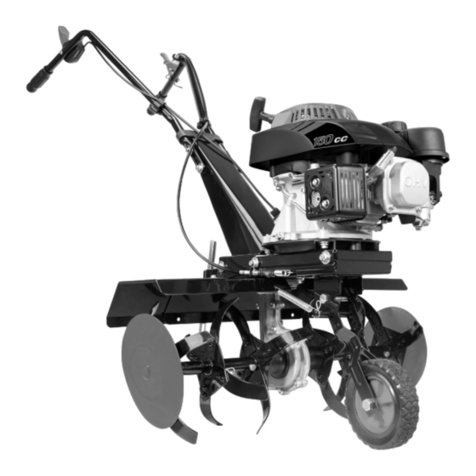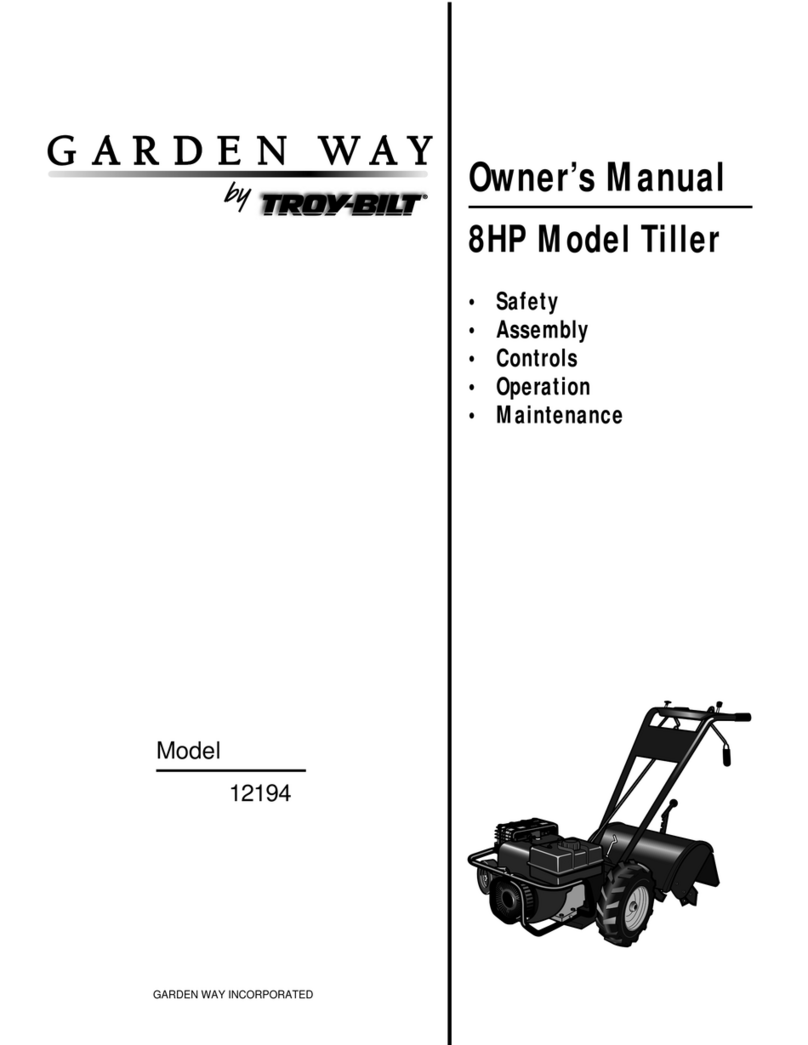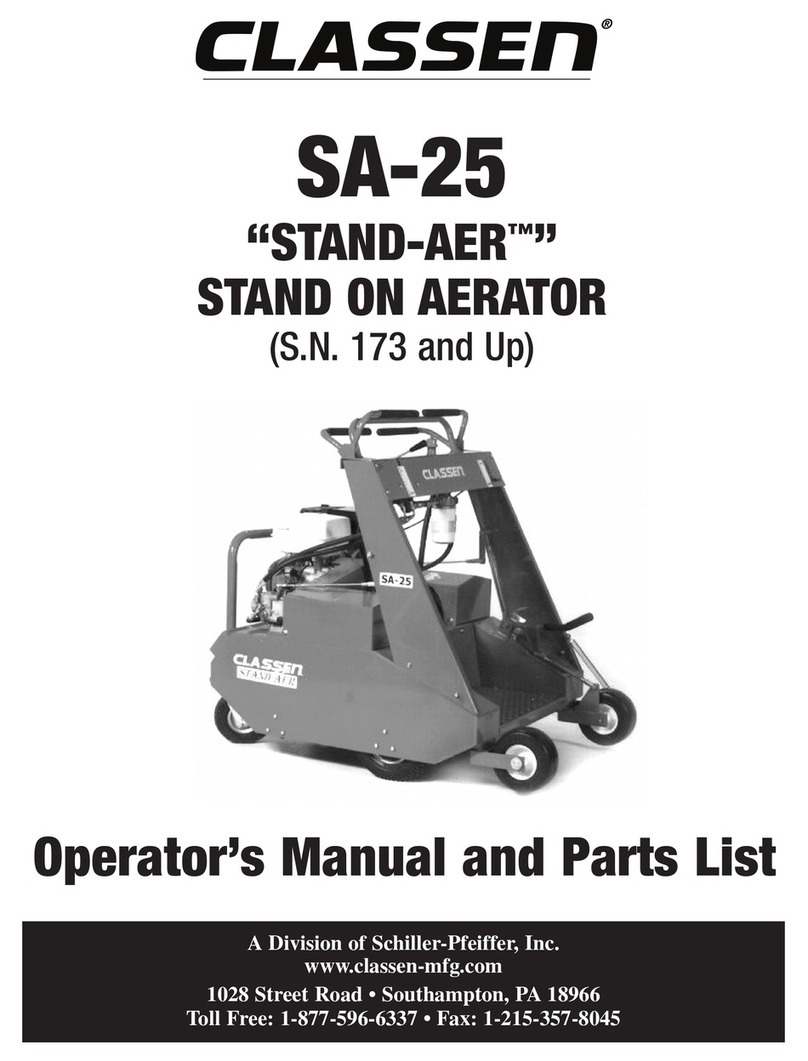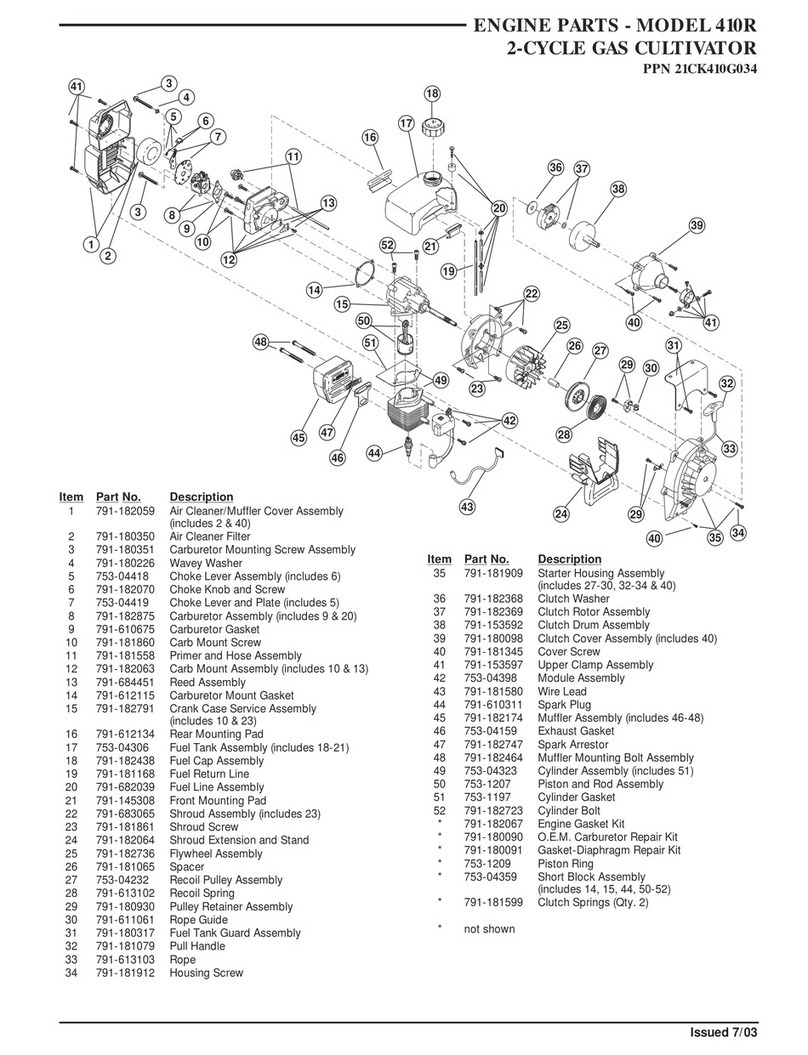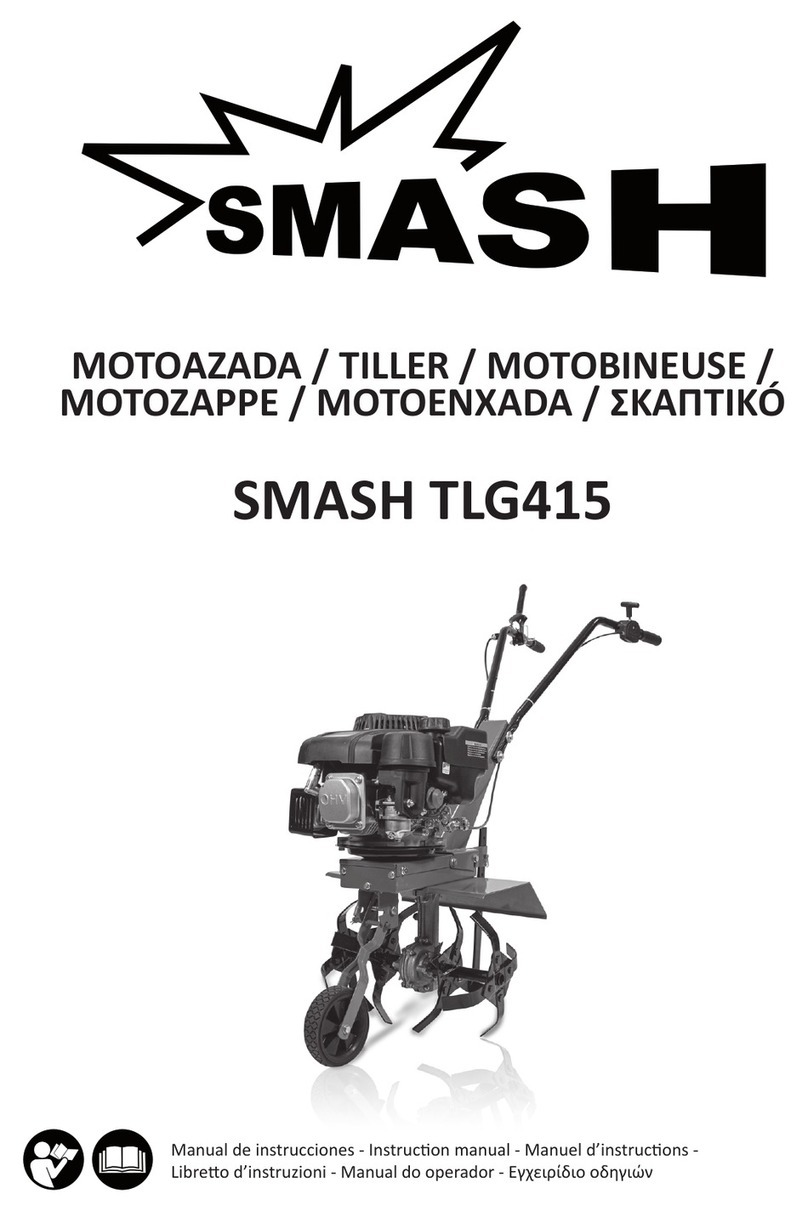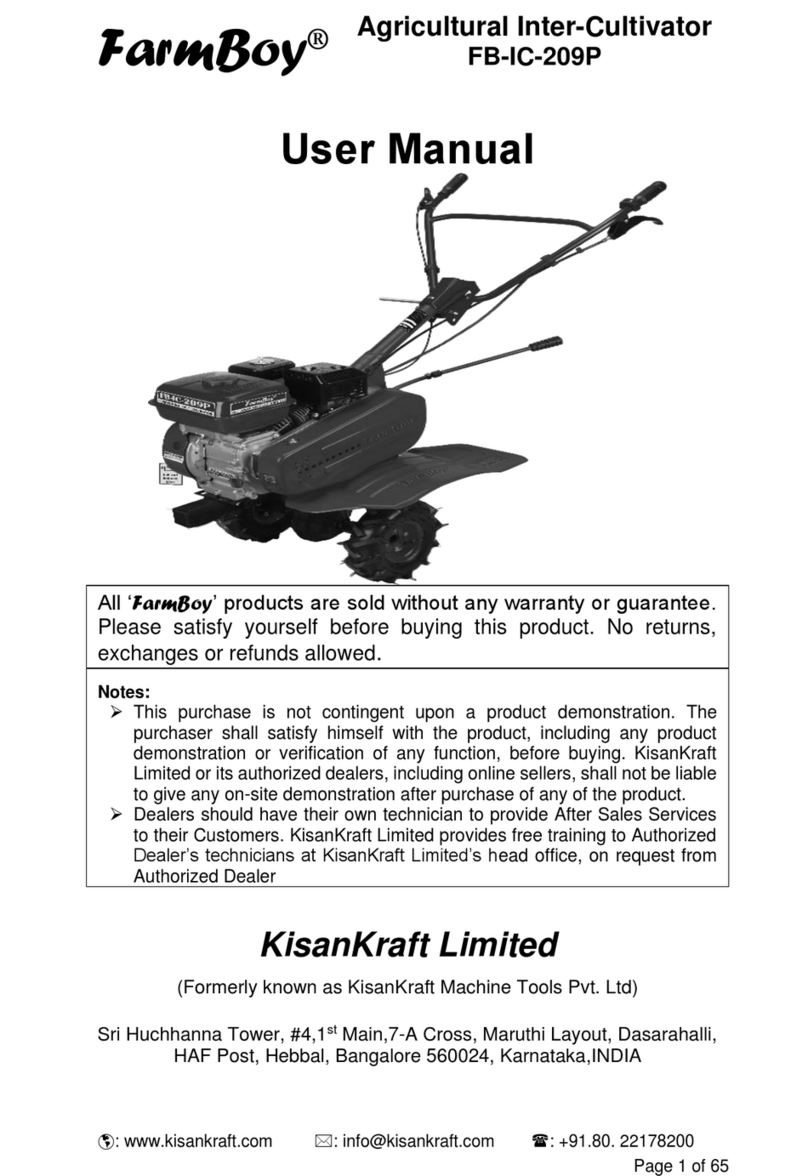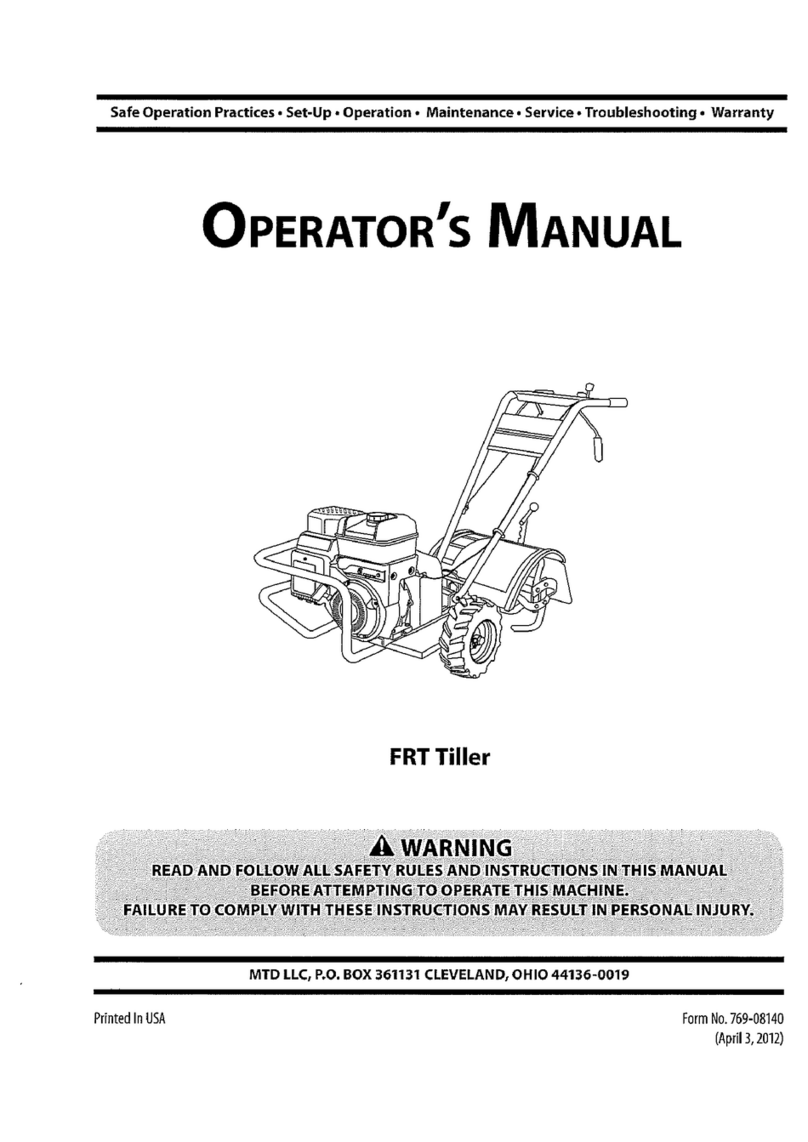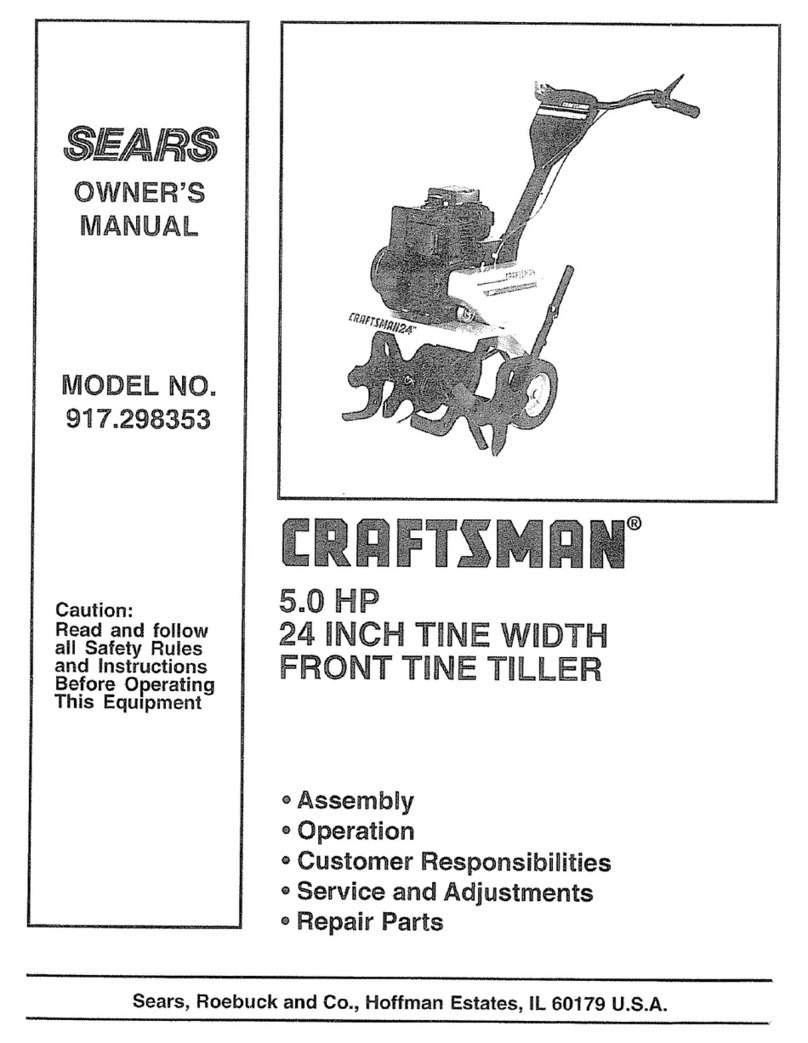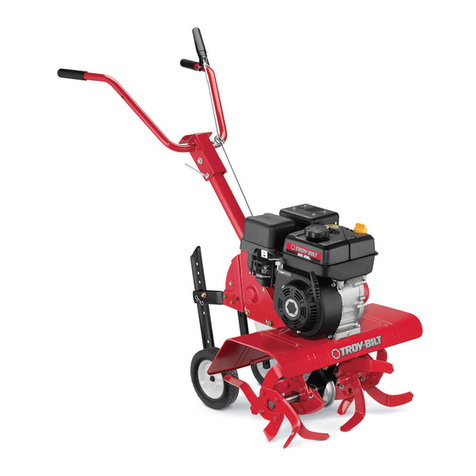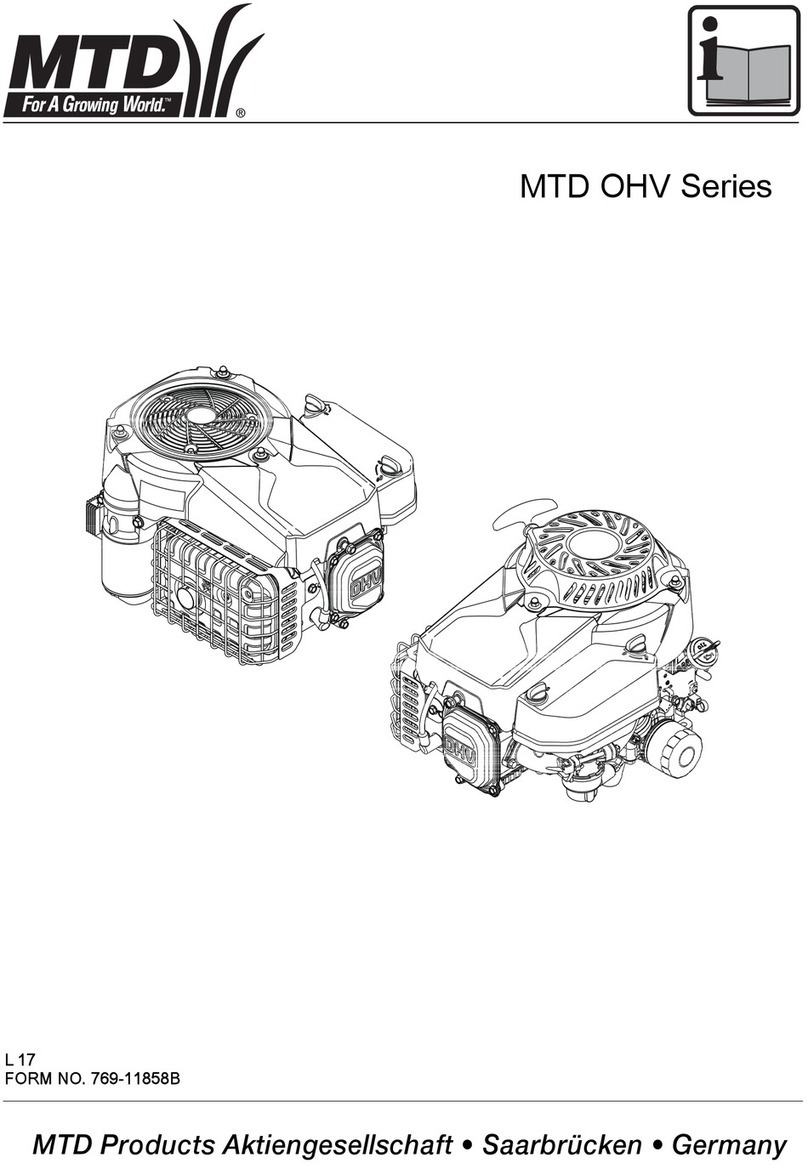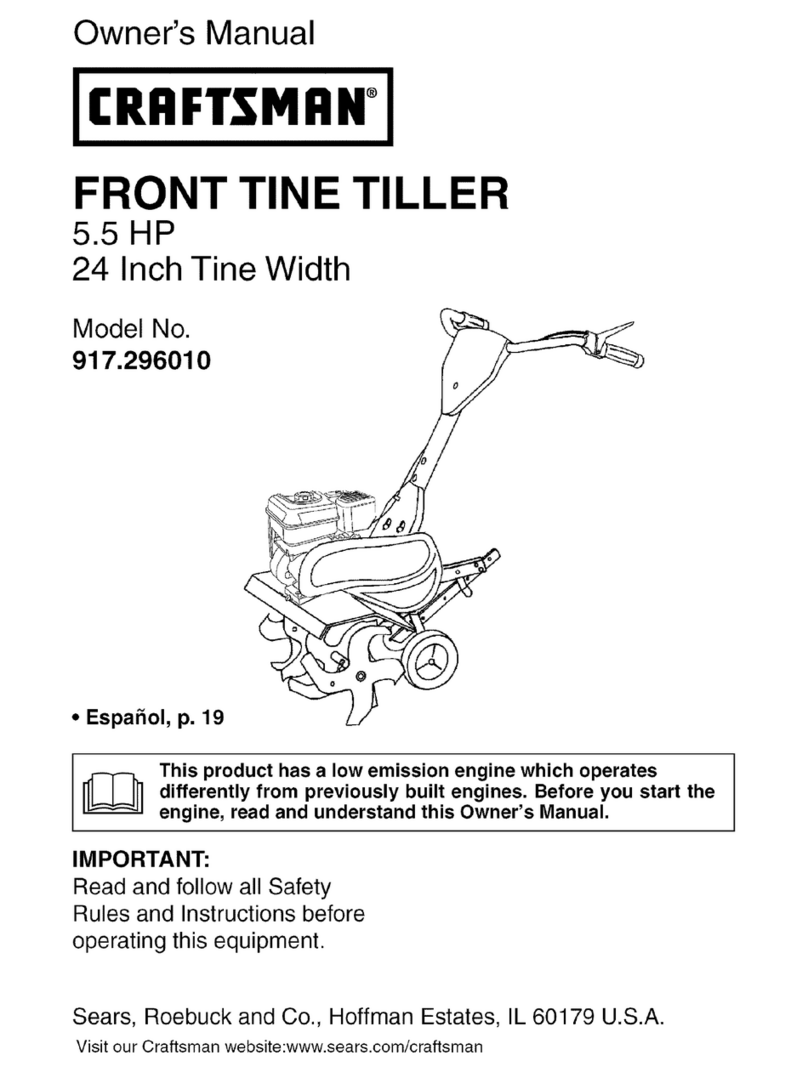
OREC SF600/600D
• Check that the safety instruction stickers are in place and in a good state. Replace them if necessary.
• Check that all the bolts and screws are properly tightened with the right torque (refer to page 16).
• Protect the grease nipples by coating them with grease and lubricate the machine.
• Check that the machine can work properly.
CHECKS ON DELIVERY
• Show the user how to perform the adjustments.
• Explain to the user the importance of the lubrication and show him the different greasing points on the machine.
• Show him the safety devices, grids, guards and the optional equipments.
• Give the instruction manual to the customer, ask him to read it carefully.
SAFETY RULES
CAUTION
Some of the illustrations show the machine with no guard, no shield. Never use the machine
without these devices.
•Learn to stop the machine in case emergency.
•Read this manual.
•Do not let anybody use the machine before having read and understood this manual.
•Do not let children use the machine.
•Do not wear loose clothes. They might be grasped by moving parts.
•Always wear protection equipments for when using the machine.
•Only work during daylight or with a good artificial light.
•Check that the safety instruction stickers are in place and in a good condition.
•Keep the machine free from debris, dust or mud.
•Check that the machine can work properly before any use.
•Check that all the shields, grids and safety guards are in place and in a good state.
•It is strictly forbidden to carry persons or animals onto the machine during the work or during the transportation.
•Never stop or start roughly when working on a slope. Never use the machine to work on a stepping terrain.
•Reduce the ground speed when running on a slope and when turning straight in order
to prevent from any risk of loosing control.
•Be very careful when bordering ditches.
•Stop the engine, and remove the sparking plug ignition cover before any intervention
on the machine.
•Never work under the machine or its parts when lifted, unless they are blocked and
maintained into position with sufficient security.
•When running on a slope, always work going up or down but never across the slope.
•Steer clear of unsteady embankments, holes or rocks. They might be dangerous during
maneuvers or transport.
•Keep away from electric wires and obstacles. A contact with electric wires cause
electrocution and death.
•Stop the machine progressively when lifting or lowering the machine.
•When stopping the work, stop the engine and remove the sparking plug ignition cover before leaving the tiller.
•Engage all the safety equipments.
•Move the controls only when correctly sat down in the tiller
•Visually check hydraulic leaks and if some parts are faulty or missing. Repair before
use.
•Never change the adjustment of the regulator, it is set in the factory. Unsetting this
valve would cause failures.
•Ensure that the user of the machine has already read and understood this manual
and that he is aware of all the safety instructions before any use.
•Always use a chuck and bronze hammer when replacing or intervening on the pins
and bolts at the end of rams, rod … etc in order to avoid the projection of metal
fragments.
